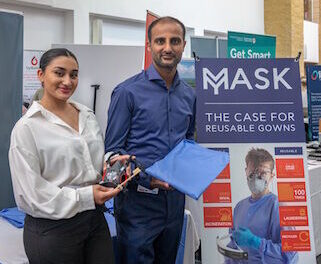Techsil explain the thinking behind some new very high W/mK materials

The past few decades have seen an escalation of power densities in electronic devices, power electronics and next generation vehicle electronics. Together with the continuing trend of reduction in device dimensions (miniaturisation) this has led to a dramatic increase in thermal issues within electronic circuits. Thermal management is therefore becoming increasingly more critical and fundamental to ensuring that electronic devices operate within their specification.
Techsil and Momentive are driven by solving thermal management problems with high performance silicone technology and have been partners for over 30 years. With expertise in thermal adhesives, thermal potting, thermal greases and thermal gap fillers the questions being asked from consumer and automotive electronics producers was, can we go higher and get a more efficient thermal transfer? Over to the boffins at Momentive and they have come back with some outstanding materials.
The challenge was to find the best-suited thermal interface materials with favourable physical and very high thermal properties that will help to run vehicle electronics and consumer electronics efficiently. As they must also be able to withstand thermal shock, physical vibration and testing environmental conditions it was a challenge eagerly taken up at Momentive.
 Background
Background
Choosing the right Thermal Interface Materials is crucial for the device efficiency, performance and reliability. Instead of costly sophisticated cooling techniques, it is often better to invest in silicone interface materials. Heat generated by high power semiconductors has to flow through a number of different material layers and interfaces before it reaches the heatsink or coolant. Silicone thermal interface materials displace air gaps to enhance the thermal contact between layers giving a more efficient heat transfer.
Market Position
Current adhesive materials hover between the 0.7 W/mK and 3.5 W/mK. The adhesives combine adhesion and bond strength with excellent heat management but remain flexible for vibration and stress absorption. Gap fillers typically hover between 2.5 W/mk – 4.1 W/mk and provide excellent stress relief and can conform to complex 3D designs, filling air gaps and voids. Current thermal pastes can be screen printed to give excellent workability and hover from 2.1 W/mk -4 W/mk and achieve minimum bond line thicknesses of 50µ. Bringing up the rear are the thermal potting grades hovering between 1.3 W/mK – 2.2 W/mK. These score with convenient 1:1 mixes and low viscosities for good flowability into complex and small cavities.

Very High W/mK Requirement?
Introducing some high thermal conductivity pre-cured silicone gels from Techsil & Momentive. These one part materials are easily dispensable by robot. They require no curing steps and are soft gels with very high thermal conductivity. Long term accelerated aging tests of > 2,000 hours have been surpassed and no cracking or movement was detected. Typical thermal conductivity values are 4.5 W/mK and 6.5 W/mK.

Do you want to go even higher?
No problem! Very high thermal conductivity silicone gap fillers with 8.2 W/mK and 10.1 W/mK are now on offer from Techsil & Momentive. These gap fillers are heat cured and offer very durable gap filling for consumer and automotive electronics. Again they are easily dispensable by robot and mixing machine for both 1K and 2K versions.
Where might these be used?
Powertrain, Vehicle Electronic Systems, Hybrid Vehicles, Electric Control Units, 48V System Devices, Electric Drive Units, Inverter systems and DC/DC Converters, Battery Packs & Modules, On-Board Chargers, IGBT Power Modules, Electric Power Steering, Autonomous Driving Systems, AI Controllers & Displays, Body Electronics, Lighting Applications, Multimedia Systems, Navigations & Telematics, Premium Instrument Clusters.
What the Future Holds?
Longer term fully Electric Vehicles are inevitable as technologies are progressing, and costs are coming down. The ultimate goal is an optimized powertrain architecture with an affordable level of electrification. Almost all innovations relating to the reduction of CO2 emissions or the enhancement of safety, comfort and infotainment are based around electronics and software. As space for additional components is limited and more and more systems are being introduced, miniaturization and system integration will drive new solutions. We expect these new components to be smaller, more powerful and more efficient. The higher energy density will translate to increased operating temperatures and heat output. In order to operate these new devices and maintain their performance over their lifetime, advanced silicone thermal management solutions are necessary. The advanced thermal management properties offered from silicones at Techsil are here to stay. They would love to tell you more about these new products TGX650, TGX450, TIA182GF & TIA2101GF.
01789 773232

